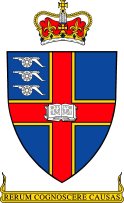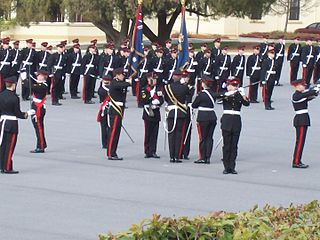
A military academy or service academy is an educational institution which prepares candidates for service in the officer corps. It normally provides education in a military environment, the exact definition depending on the country concerned.
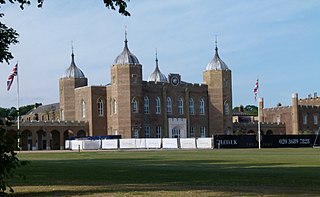
The Royal Military Academy (RMA) at Woolwich, in south-east London, was a British Army military academy for the training of commissioned officers of the Royal Artillery and Royal Engineers. It later also trained officers of the Royal Corps of Signals and other technical corps. RMA Woolwich was commonly known as "The Shop" because its first building was a converted workshop of the Woolwich Arsenal.
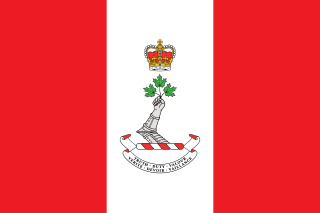
The Royal Military College of Canada, abbreviated in English as RMC and in French as CMR, is a military academy and, since 1959, a degree-granting university of the Canadian Armed Forces. It was established in 1874 and conducted its first classes on June 1, 1876. The Government of Ontario empowered RMC to confer degrees in the Social Sciences and Humanities, Science, and Engineering through The Royal Military College of Canada Degrees Act, 1959. Programs are offered at the undergraduate and graduate levels, both on campus as well as through the college's distance learning program via the Division of Continuing Studies.

The Institute of Mathematics and its Applications (IMA) is the UK's chartered professional body for mathematicians and one of the UK's learned societies for mathematics.

Cranfield University is a British postgraduate-only public research university specialising in science, engineering, design, technology and management. Cranfield was founded as the College of Aeronautics (CoA) in 1946. Through the 1950s and 1960s, the development of aircraft research led to growth and diversification into other areas such as manufacturing and management, and in 1967, to the founding of the Cranfield School of Management. In 1969, the College of Aeronautics was renamed the Cranfield Institute of Technology, was incorporated by royal charter, gained degree awarding powers, and became a university. In 1993, it adopted its current name.
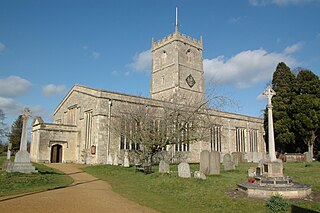
Shrivenham is a village and civil parish in the Vale of White Horse, Oxfordshire, England, about 5 miles (8 km) south-west of Faringdon. The village is close to the county boundary with Wiltshire and about 7 miles (11 km) east-northeast of Swindon. The 2011 Census recorded the parish population as 2,347. The parish is within the historic boundaries of Berkshire; the 1974 boundary changes transferred the Vale of White Horse to Oxfordshire for administrative purposes.
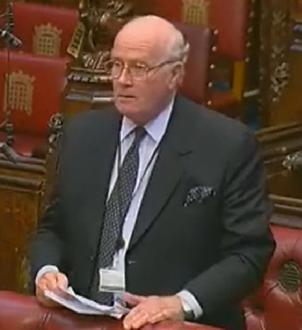
Field Marshal Richard Frederick Vincent, Baron Vincent of Coleshill, was a British Army officer. After serving with British Army of the Rhine he served with the Commonwealth Brigade in Malaysia during the Indonesia–Malaysia confrontation. He commanded the 12th Light Air Defence Regiment in Northern Ireland during the Troubles, for which he was appointed a Companion of the Distinguished Service Order, and later commanded the 19th Airportable Brigade. Although he never served as one of the individual service heads, he went on to be Vice-Chief of the Defence Staff in the late 1980s and then Chief of the Defence Staff in the aftermath of the Gulf War. He subsequently became Chair of the Military Committee of NATO in the mid-1990s.

In ballistics, the ballistic coefficient of a body is a measure of its ability to overcome air resistance in flight. It is inversely proportional to the negative acceleration: a high number indicates a low negative acceleration—the drag on the body is small in proportion to its mass. BC can be expressed with the units kilograms per square meter (kg/m2) or pounds per square inch (lb/in2).
Staff colleges train military officers in the administrative, military staff and policy aspects of their profession. It is usual for such training to occur at several levels in a career. For example, an officer may be sent to various staff courses: as a captain they may be sent to a single service command and staff school to prepare for company command and equivalent staff posts; as a major to a single or joint service college to prepare for battalion command and equivalent staff posts; and as a colonel or brigadier to a higher staff college to prepare for brigade and division command and equivalent postings.

The Defence Academy of the United Kingdom provides higher education for personnel in the British Armed Forces, Civil Service, other government departments and service personnel from other nations. The Director General of the Defence Academy is Lieutenant General Thomas Copinger-Symes, a senior Army officer.

The Australian Defence Force Academy (ADFA) is a tri-service military Academy that provides military and academic education for junior officers of the Australian Defence Force in the Royal Australian Navy (RAN), Australian Army and Royal Australian Air Force (RAAF). In 2016 the Academy began accepting civilian students in its undergraduate courses.
14th Regiment Royal Artillery is a training regiment within the Royal Artillery, part of the British Army.

The Defence Institute of Advanced Technology (DIAT) is the premier engineering training institute under the Department of Defence Research & Development, Ministry of Defence, and Government of India. DIAT (DU) specializes in training officers from Defence Research Organizations, IOFS, Defence PSUs, ship building agencies, Mazagon Dock Shipbuilders, armed forces of friendly countries, and other central and state governmental agencies.
Derek K. Hitchins is a British systems engineer and was professor in engineering management, in command & control and in systems science at Cranfield University at Cranfield, Bedfordshire, England.
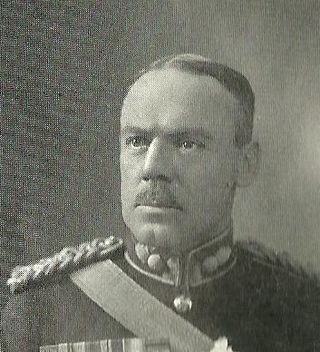
Major-General Charles Francis Constantine was a Canadian General and commandant of the Royal Military College of Canada from 1925 to 1930.
The 2014 Birthday Honours were appointments by some of the 16 Commonwealth realms of Queen Elizabeth II to various orders and honours to reward and highlight good works by citizens of those countries. The Birthday Honours are awarded as part of the Queen's Official Birthday celebrations during the month of June. The Queen's Birthday Honours were announced on 14 June 2014 in the United Kingdom, on 9 June 2014 in Australia, on 2 June 2014 in New Zealand, on 14 June 2014 in Grenada, Papua New Guinea, Solomon Islands, Tuvalu, Saint Lucia and Belize.
Francis Bashforth was an English Anglican priest and mathematician, who is known for his use of applied mathematics on ballistics.
Frank Robinson Hartley FRSC FRAeS is a former vice-chancellor of Cranfield University from 1989 to 2006.

Lieutenant General Dewan Rabindranath Soni, PVSM, VSM is a former General Officer-Commanding-in-Chief (GOC-in-C), Southern Command of the Indian Army. He served in office from 1 December 2017 till 30 September 2018. He assumed the post after Lieutenant General P M Hariz retired and was succeeded by Lt General Satinder Kumar Saini.
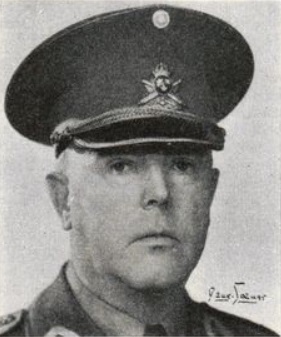
Lieutenant General Karl Rudolf Kolmodin was a Swedish Coastal Artillery officer. Kolmodin's senior commands include postings as commanding officer of the Gothenburg Coastal Artillery Defence and Stockholm Coastal Artillery Defence and as Inspector of the Swedish Coastal Artillery.
